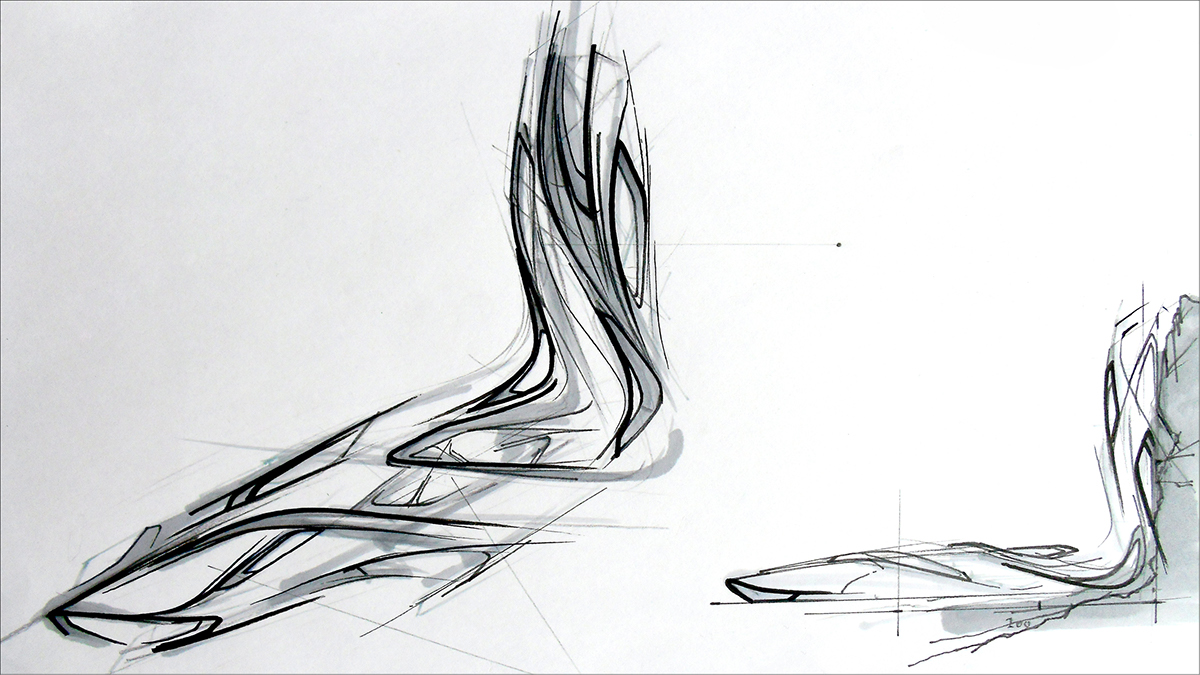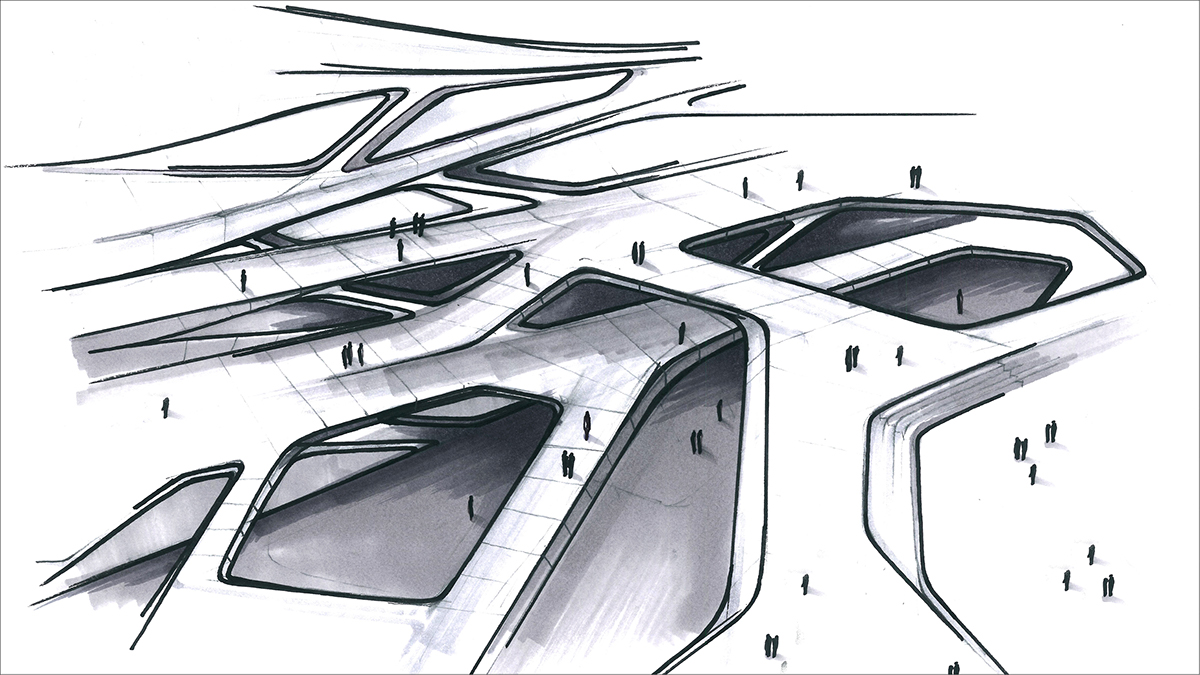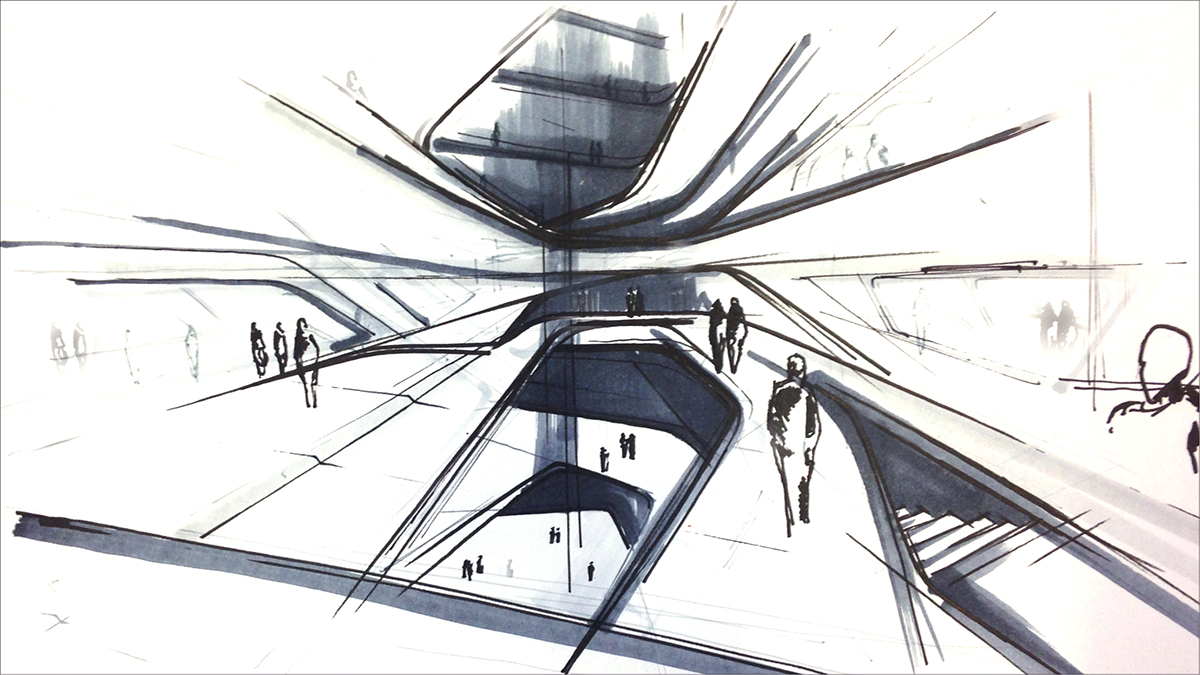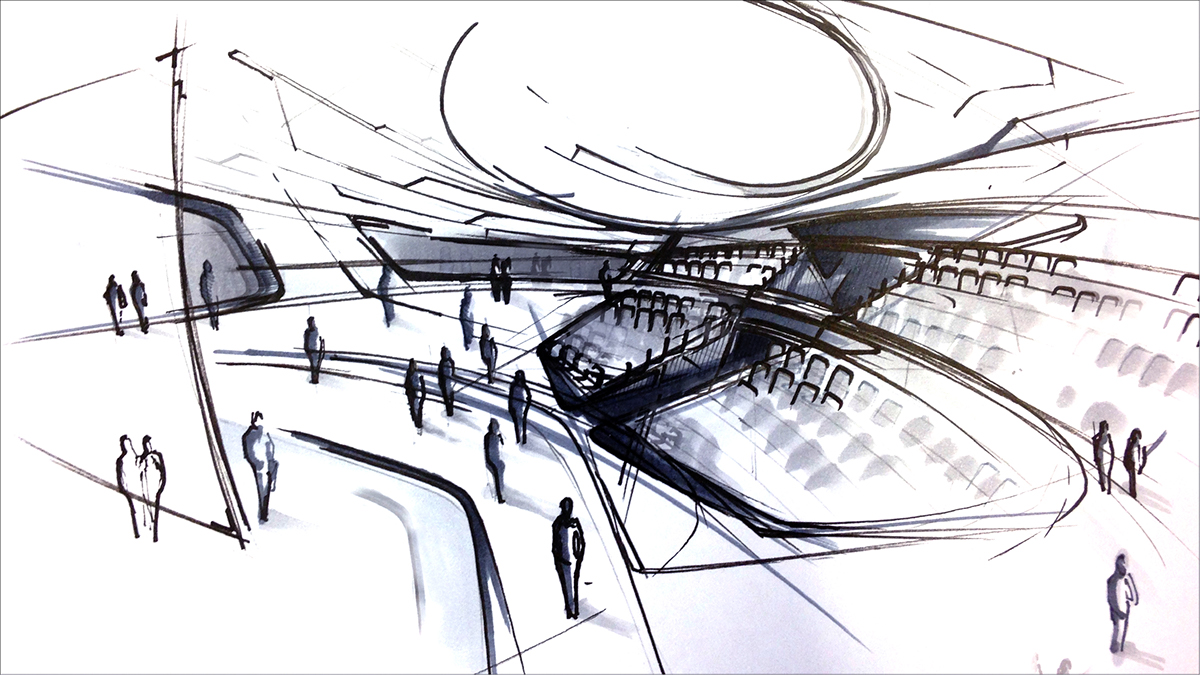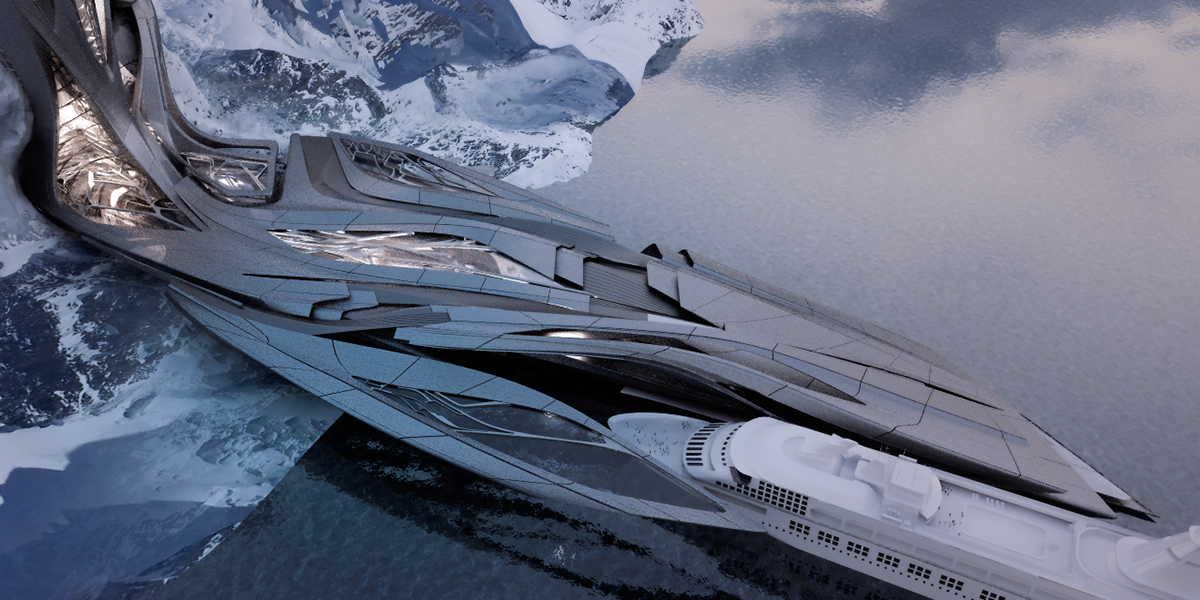
“The goal of the Transformable Antarctic Research Facility Project is to investigate the range of architectural qualities within research facilities and its generative potential for new building typologies in an extreme environment. The specific research facilities in question are specialized in various applied sciences such as advanced engineering, bio-medicine and biomedical engineering, biology, geology, oceanography, astronomy, glaciology and geophysics, climatology, meteorology and hydrology, and therefore are highly dependent on a specific location. Extreme environments, that are very cold or hot, dry or humid are often key environments, where scientists can research questions regarding life, the world surrounding us as well as outer space.
The location of this project is the Antarctic. The qualities to be found within this specific environment, such as extreme winds, temperatures and precipitation, the regular transforming state of the environment from solid to liquid state and back, the unique play of light given by the local alternation of day and night or the constant need for adaptation of living organism with seasonal climate change constitute parameters for the further exploration and integration into the design process.
Rather than following conventional design strategies, the aim is to investigate into new and alternative processes like bio mimicry, bionics and biomorphic design. By examining nature’s models, systems, algorithms and elements, the goal is not to mimic but to rather learn from the intricate, all-encompassing interplay of its elements and multiple layers of complexity.
The project attempts to merge the aesthetic qualities and complex functionality of the existing environment and its biodiversity in order to design a station that considerably differs from existing facilities all around the pole and therefore enhance the capabilities of transforming and adapt to exterior environmental factors and by modifying it’s structure and envelope as well becoming more compact or porous depending of de seasonal cycles to preserve energy loss and become more efficient to it’s programmatic needs.
To further explore the process’s innovative potential the project proposes the combination of two distinctive programs, the secluded enclosed and introverted spaces of a research station on the one hand and – referring to the current trend towards extreme environmental touristic exploration – the open and communicative spaces of a touristic resort, thus creating the opportunity to negotiate and blend totally different programmatic requirements and their respective relation to the outside conditions.
The aim therefore is to create a mixed program that includes – alongside the research facilities – permanent and temporary accommodation, public exhibitions, leisure and training spaces, conference halls and observation decks, docking stations, helipads and runways.
Research stations are usually engineered to fulfill technical needs and provide minimal life conditions. The absence of architectural consideration in the design process results in a lack of living quality limiting the program to basic functions only.
Touristic experience is also limited, missing the opportunity to diversify and explore the full spectrum of activity and the qualities of the fascinating extreme landscape.
The project rigorously addresses the context of the site of Antarctica by nesting the volume in a linear and vertical system depending on its location within the topography and its orientation and at the same time by the parameters of constant mutability and transformation in reaction to the every changing site.”
Project Author: Sergiu-Radu Pop (https://www.behance.net/Sergiu_Radu_Pop)
IoA Institut of Architecture at the University of Applied Arts Vienna
© Studio Hadid Vienna and Sergiu-Radu Pop
The location of this project is the Antarctic. The qualities to be found within this specific environment, such as extreme winds, temperatures and precipitation, the regular transforming state of the environment from solid to liquid state and back, the unique play of light given by the local alternation of day and night or the constant need for adaptation of living organism with seasonal climate change constitute parameters for the further exploration and integration into the design process.
Rather than following conventional design strategies, the aim is to investigate into new and alternative processes like bio mimicry, bionics and biomorphic design. By examining nature’s models, systems, algorithms and elements, the goal is not to mimic but to rather learn from the intricate, all-encompassing interplay of its elements and multiple layers of complexity.
The project attempts to merge the aesthetic qualities and complex functionality of the existing environment and its biodiversity in order to design a station that considerably differs from existing facilities all around the pole and therefore enhance the capabilities of transforming and adapt to exterior environmental factors and by modifying it’s structure and envelope as well becoming more compact or porous depending of de seasonal cycles to preserve energy loss and become more efficient to it’s programmatic needs.
To further explore the process’s innovative potential the project proposes the combination of two distinctive programs, the secluded enclosed and introverted spaces of a research station on the one hand and – referring to the current trend towards extreme environmental touristic exploration – the open and communicative spaces of a touristic resort, thus creating the opportunity to negotiate and blend totally different programmatic requirements and their respective relation to the outside conditions.
The aim therefore is to create a mixed program that includes – alongside the research facilities – permanent and temporary accommodation, public exhibitions, leisure and training spaces, conference halls and observation decks, docking stations, helipads and runways.
Research stations are usually engineered to fulfill technical needs and provide minimal life conditions. The absence of architectural consideration in the design process results in a lack of living quality limiting the program to basic functions only.
Touristic experience is also limited, missing the opportunity to diversify and explore the full spectrum of activity and the qualities of the fascinating extreme landscape.
The project rigorously addresses the context of the site of Antarctica by nesting the volume in a linear and vertical system depending on its location within the topography and its orientation and at the same time by the parameters of constant mutability and transformation in reaction to the every changing site.”
Project Author: Sergiu-Radu Pop (https://www.behance.net/Sergiu_Radu_Pop)
IoA Institut of Architecture at the University of Applied Arts Vienna
© Studio Hadid Vienna and Sergiu-Radu Pop

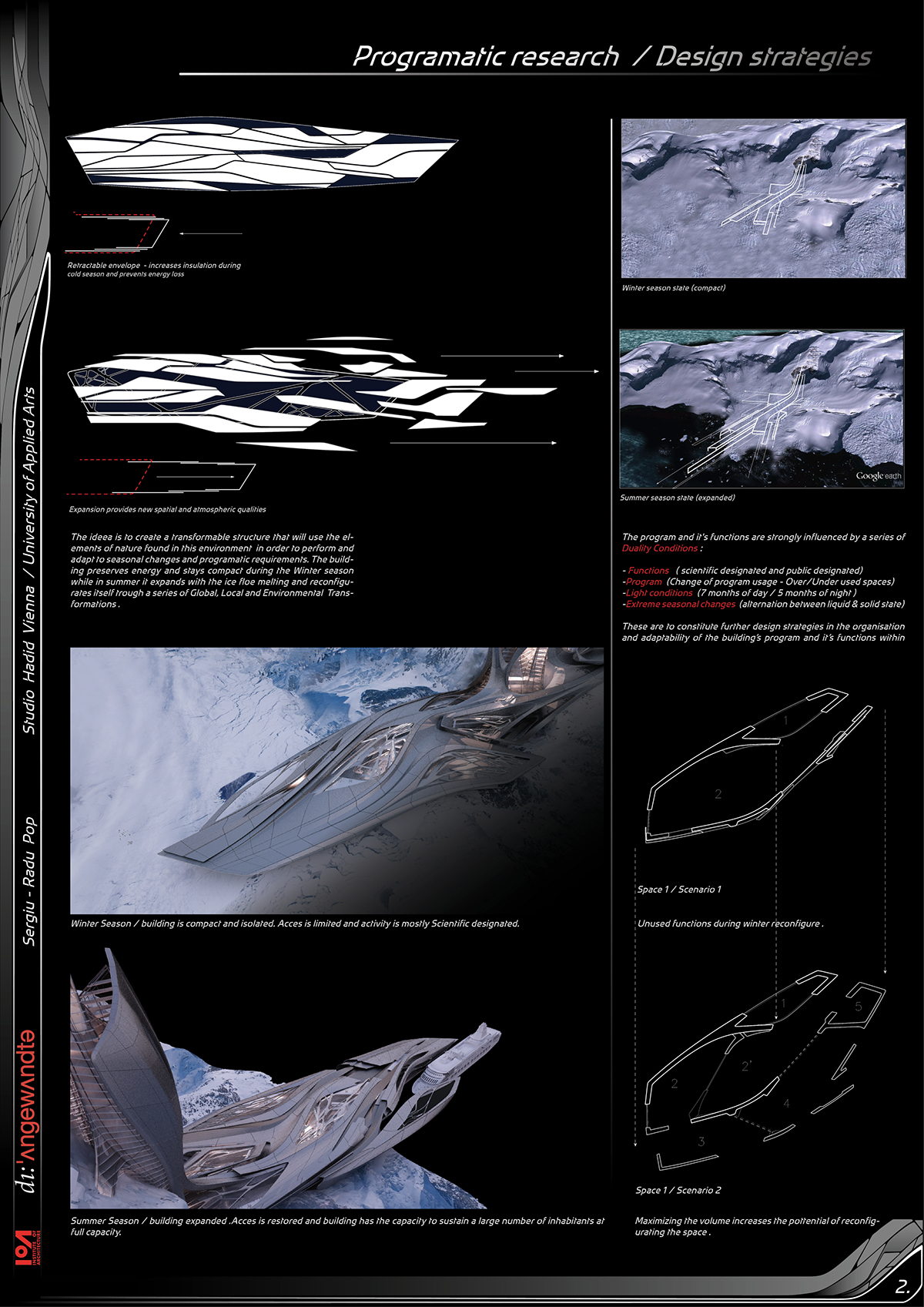
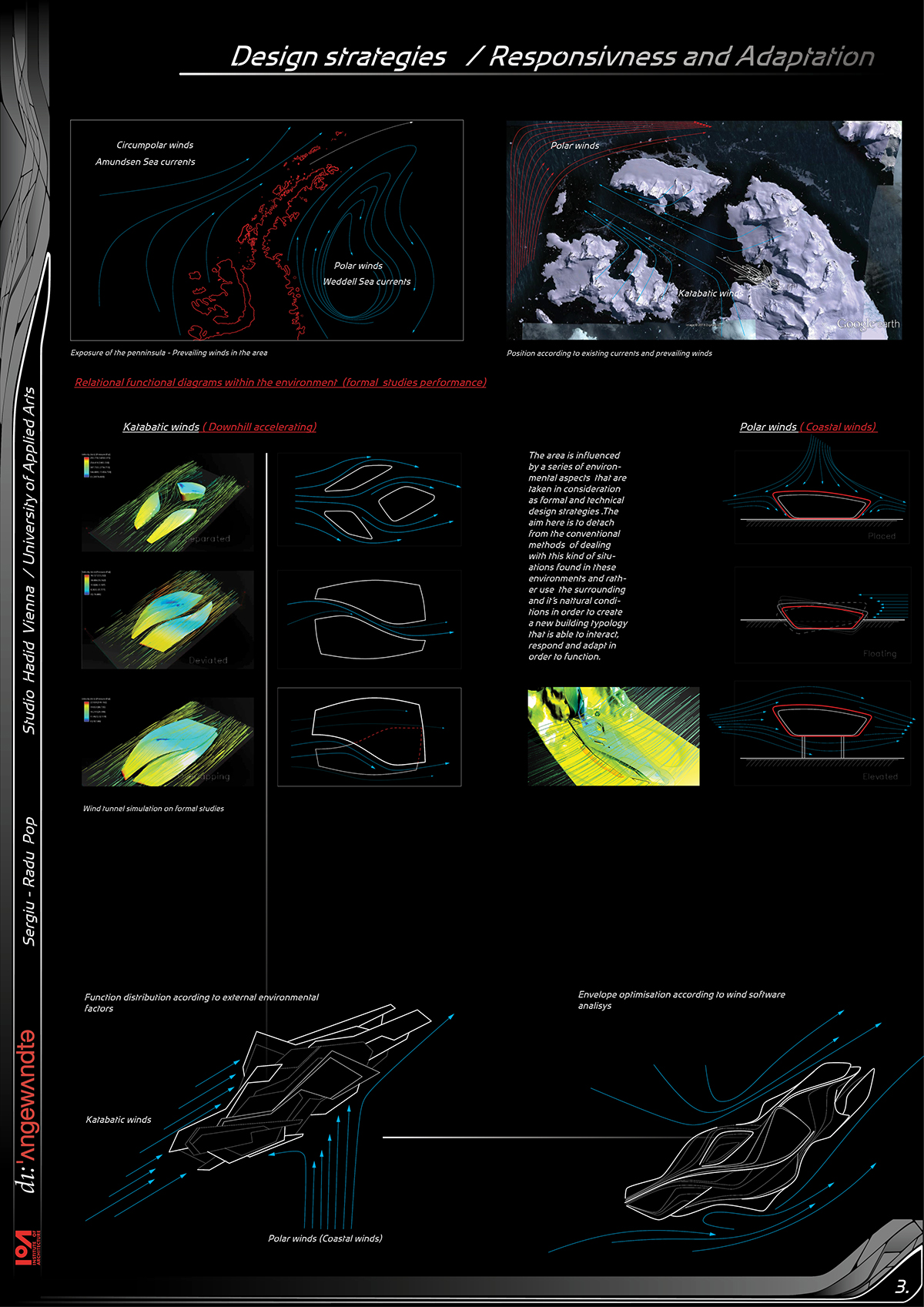

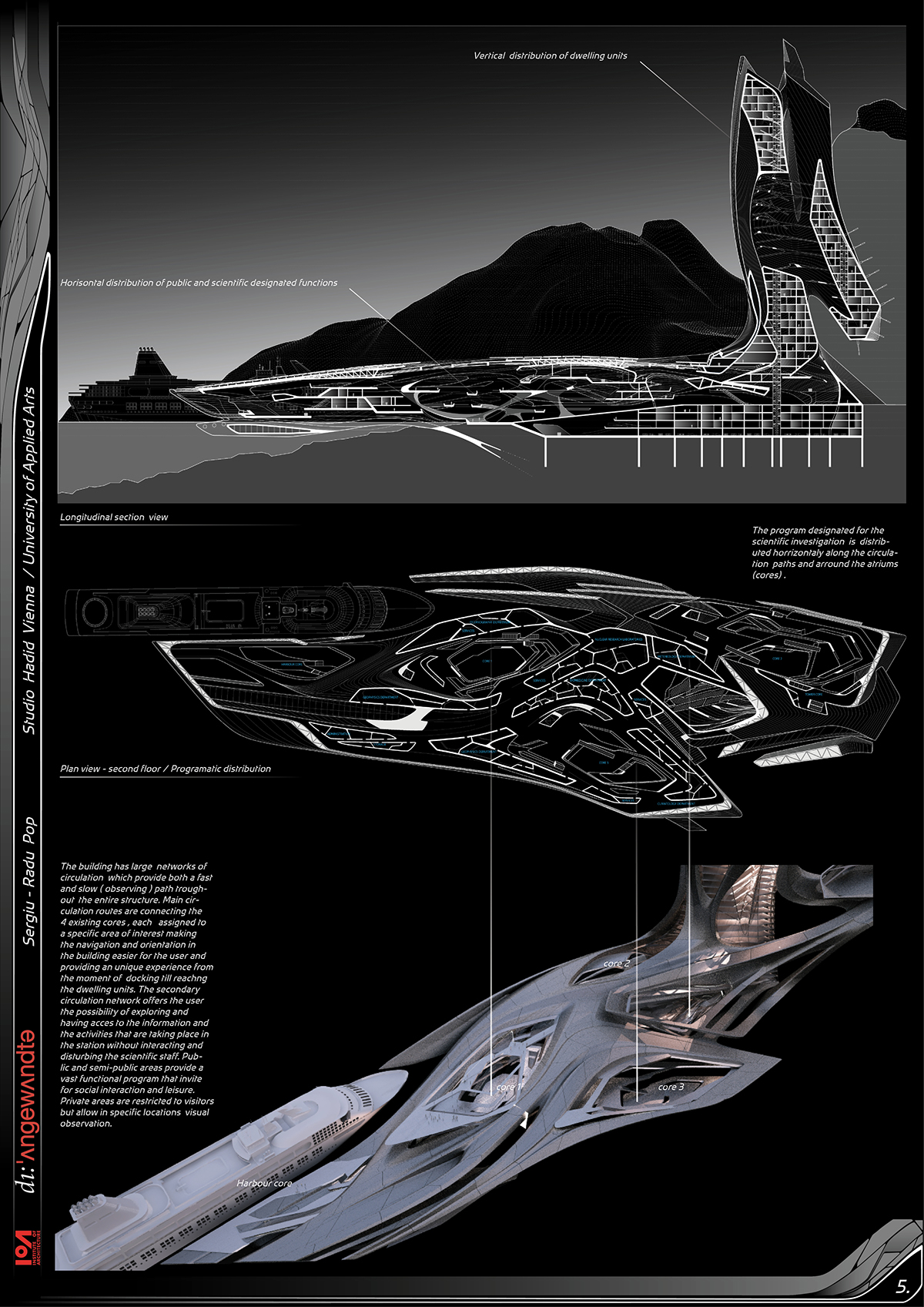
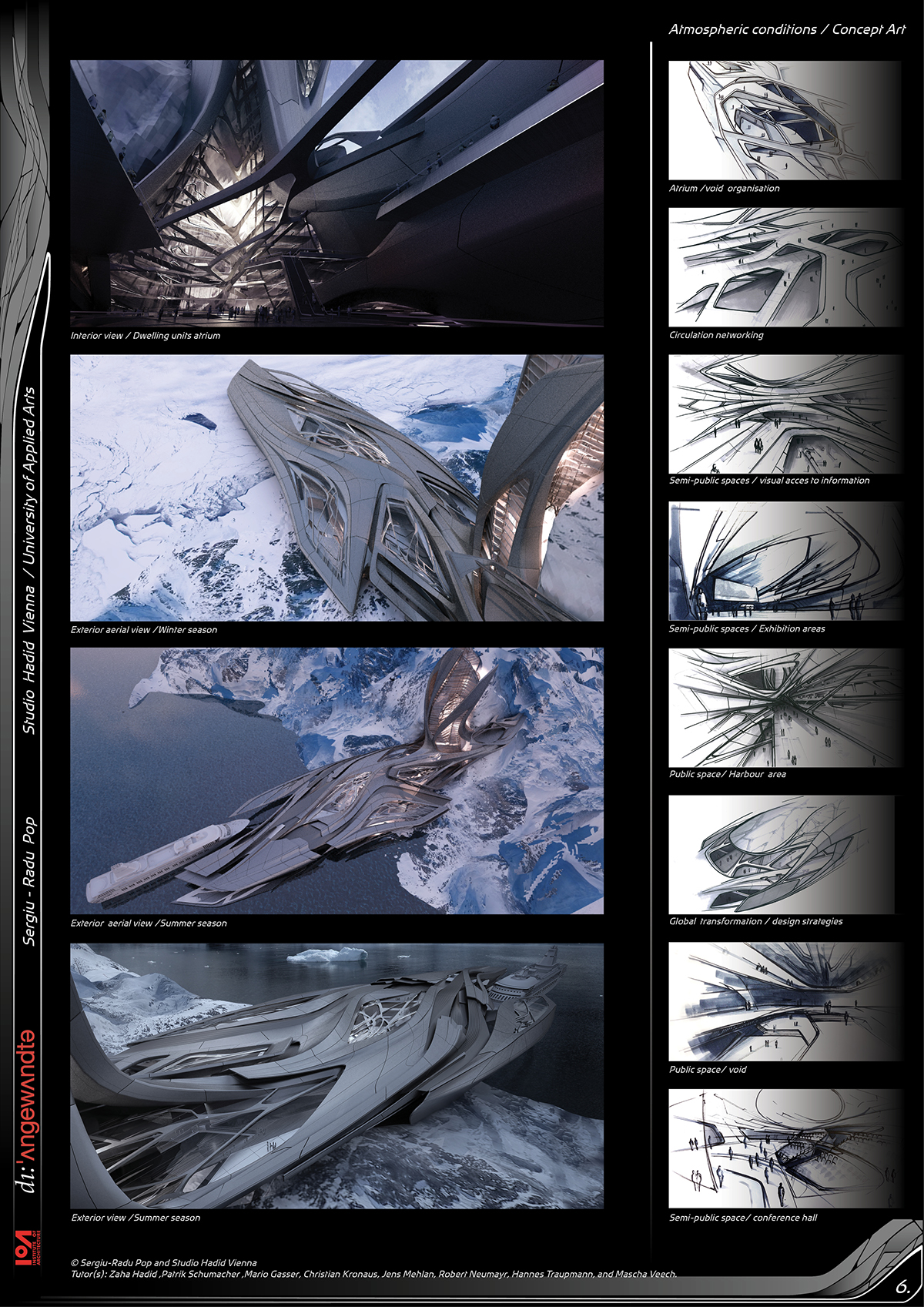

Exterior view - Expanded /Summer Season

Exterior view - Expanded /Summer Season

Exterior view - Compact /Winter Season

Exterior view - Compact /Winter Season

Exterior view - Compact /Winter Season

Close-up view of the kinetic envelope and tensile membrane

Plan view - 2nd. floor Programatic organisation

Longitudinal Section view - Rear part of the building is nested in the Rock bed underneath the Permafrost while front part of the building permits movement while floating.

Interior View - Dwelling units acces Atrium.
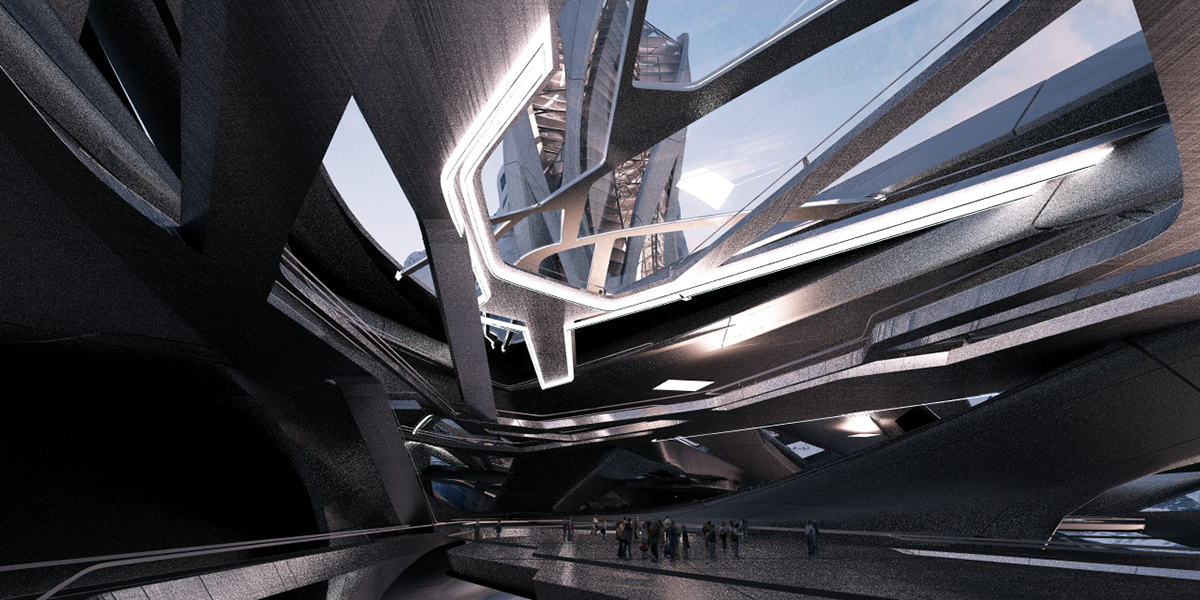
Interior view
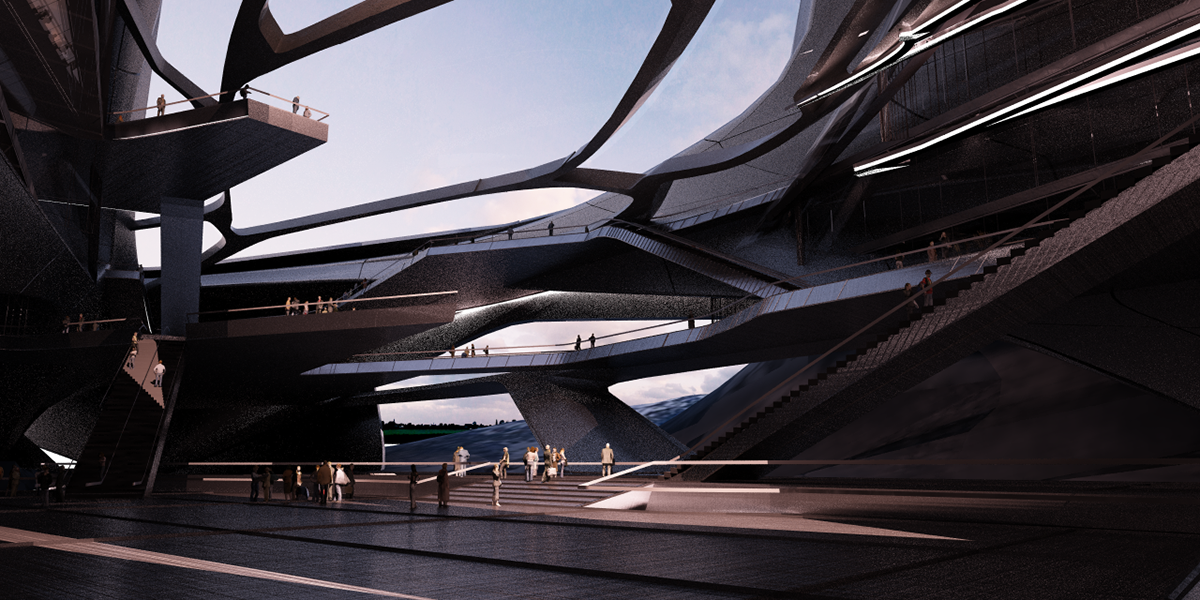
Interior view

Interior view

Exterior perspective - Dwelling units /Tower view

Physical Model scale 1 : 1000
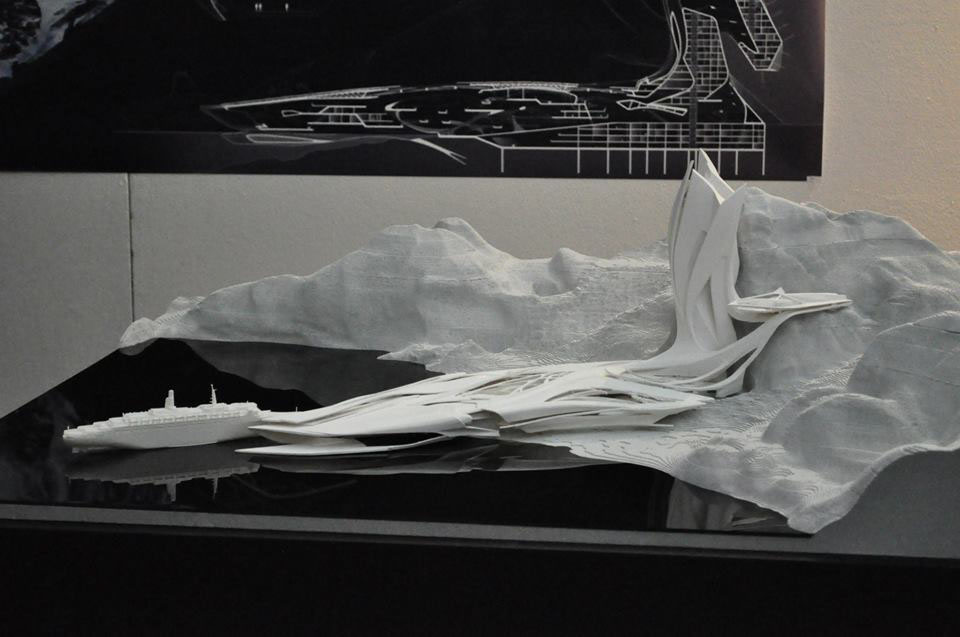
Physical Model scale 1 : 1000
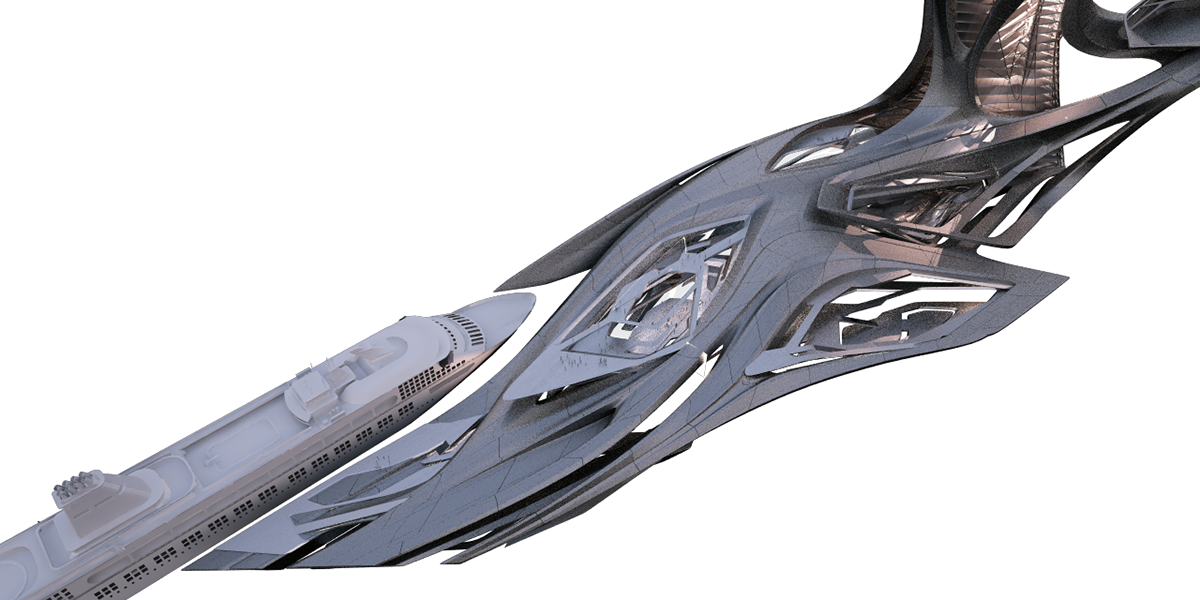
View showing the 4 acces atriums (harbour acces /atrium 1 , 2, conference hall, dwelling units acces atrium

View showing the 4 acces atriums (harbour acces /atrium 1 , 2, conference hall, dwelling units acces atrium
